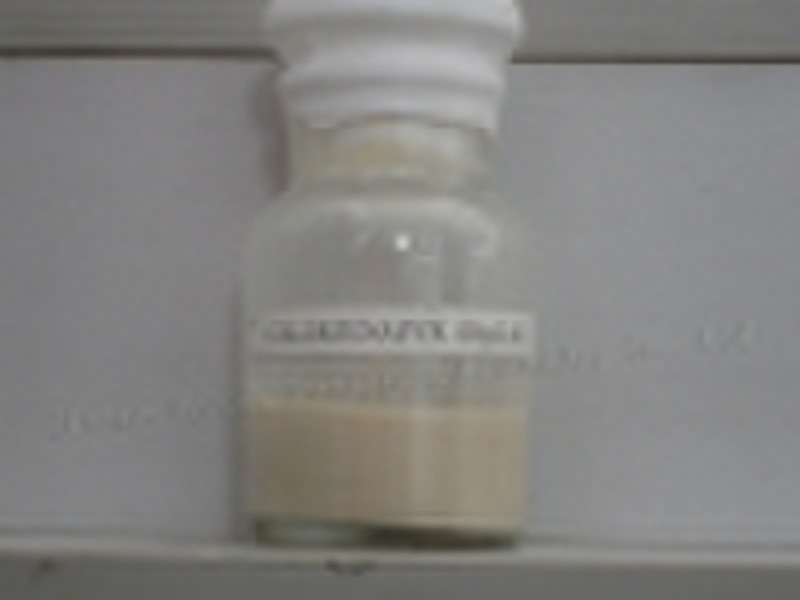Catalog
-
Catalog
- Agriculture
- Apparel
- Automobiles & Motorcycles
- Beauty & Personal Care
- Business Services
- Chemicals
- Construction & Real Estate
- Consumer Electronics
- Electrical Equipment & Supplies
- Electronic Components & Supplies
- Energy
- Environment
- Excess Inventory
- Fashion Accessories
- Food & Beverage
- Furniture
- Gifts & Crafts
- Hardware
- Health & Medical
- Home & Garden
- Home Appliances
- Lights & Lighting
- Luggage, Bags & Cases
- Machinery, Hardware & Tools
- Measurement & Analysis Instruments
- Mechanical Parts & Fabrication Services
- Minerals & Metallurgy
- Office & School Supplies
- Packaging & Printing
- Rubber & Plastics
- Security & Protection
- Service Equipment
- Shoes & Accessories
- Sports & Entertainment
- Telecommunications
- Textiles & Leather Products
- Timepieces, Jewelry, Eyewear
- Tools
- Toys & Hobbies
- Transportation
Filters
Search
chlorfenapyr

Lydia Sun
Contact person
Basic Information
| Classification | Fungicide |
|---|---|
| CAS No. | 122453-73-0 |
| Place of Origin | Jiangsu China (Mainland) |
| Purity | 97TC |
| Application | Fungicide |
| Brand Name | Hongze |
| Model Number | 97TC |
| State | Liquid |
chlorfenapyrCommon name chlorfenapyr (BSI, pa ISO, ANSI)IUPAC name 4-bromo-2-(4-chlorophenyl)-1-ethoxymethyl-5-trifluoromethylpyrrole-3-carbonitrileChemical Abstracts name 4-bromo-2-(4-chlorophenyl)-1-(ethoxymethyl)-5-(trifluoromethyl)-1H-pyrrole-3-carbonitrileCAS RN [122453-73-0] Development codes AC 303,630; CL 303,630 (both Cyanamid); MK-242 (Mitsubishi)PHYSICAL CHEMISTRYMol. wt. 407.6 M.f. C15H11BrClF3N2O Form White solid. M.p. 100-101 ºC KOW logP = 4.83 Solubility Practically insoluble in water. Soluble in acetone, diethyl ether, dimethyl sulfoxide, tetrahydrofuran, acetonitrile, and alcohols.COMMERCIALISATIONHistory Under development by American Cyanamid Co. (now BASF AG).APPLICATIONSBiochemistry Oxidative removal in vivo of the N-ethoxymethyl group generates the active species, which is a mitochondrial uncoupler. Mode of action Insecticide and acaricide with mainly stomach and some contact action. Exhibits good translaminar but limited systemic activity in plants. Uses Control of many species of insects and mites, including those resistant to carbamate, organophosphate and pyrethroid insecticides and also chitin-synthesis inhibitors, in cotton, vegetables, citrus, top fruit, vines and soya beans. Among pests resistant to conventional products which are controlled by chlorfenapyr are Brevipalpus phoenicis (leprosis mite), Leptinotarsa decemlineata (Colorado potato beetle), Helicoverpa spp., Heliothis spp., Plutella xylostella (diamond-back moth) and Tetranychus spp. Its use in resistance management programmes for control of various cotton pests is under evaluation. Phytotoxicity No phytotoxicity observed at field use rates. Formulation types EC; SC. SelectedMAMMALIAN TOXICOLOGYOral Acute oral LD50 for male rats 441, female rats 1152 mg tech./kg. Skin and eye Acute percutaneous LD50 for rabbits >2000 mg/kg. Moderate eye irritant; non-irritating to skin (rabbits). Inhalation LC50 for rats 1.9 mg tech./l air. Other Non-mutagenic in the Ames, CHO/HGPRT, mouse micronucleus and unscheduled DNA synthesis tests. Toxicity class WHO (a.i.) IIECOTOXICOLOGYBirds Acute oral LD50 for mallard ducks 10, bobwhite quail 34 mg/kg. LC50 (8 d) for mallard ducks 9.4, bobwhite quail 132 ppm. Fish LC50 (48 h) for carp 500 mg/l. LC50 (96 h) for rainbow trout 7.44, bluegill sunfish 11.6 mg/l. Daphnia LC50 (96 h) 6.11 mg/l. Bees LD50 0.2 mg/bee
Payment term
Letter of credit
Telegraphic transfer
-
Payment Methods
We accept:









